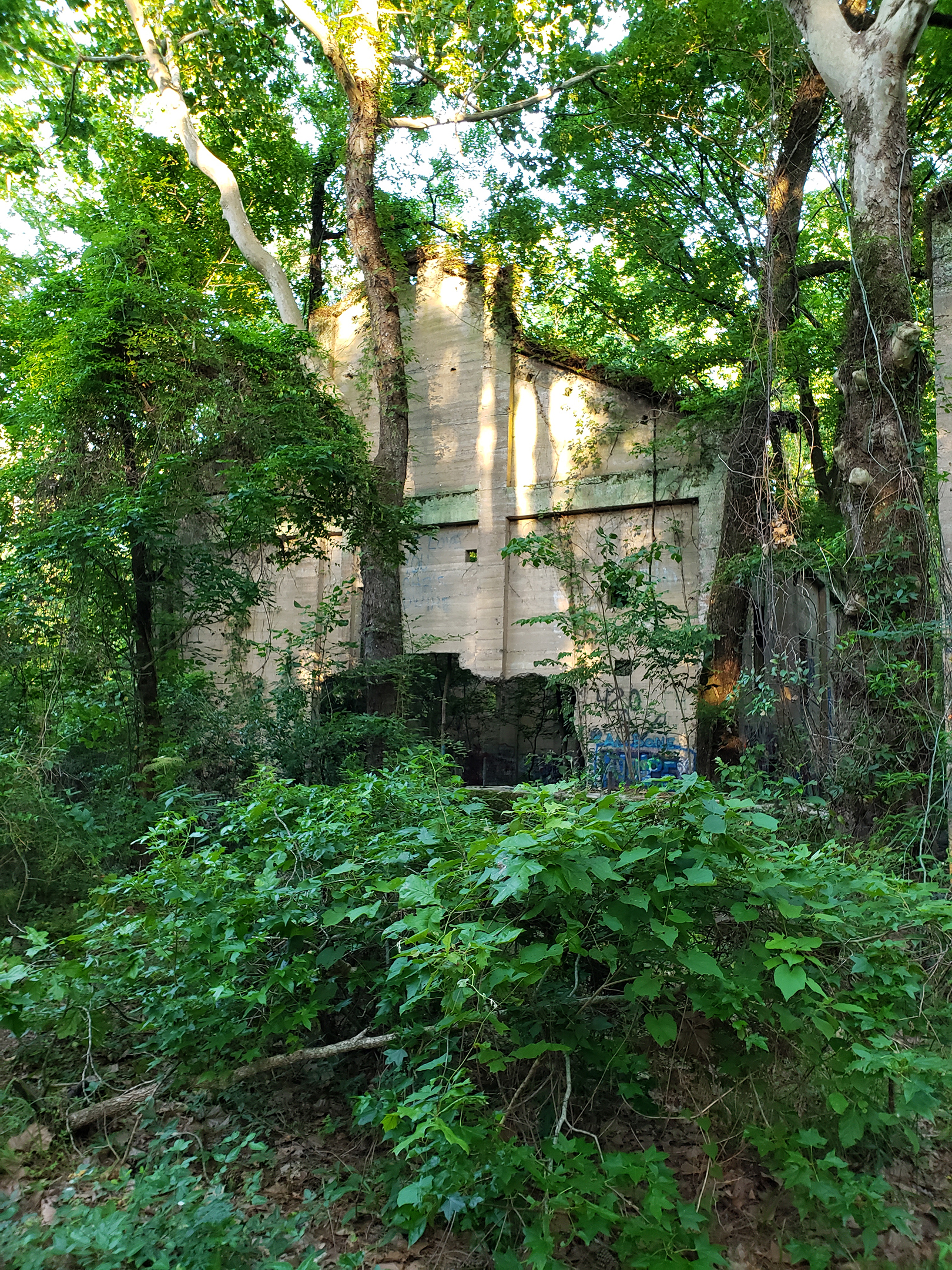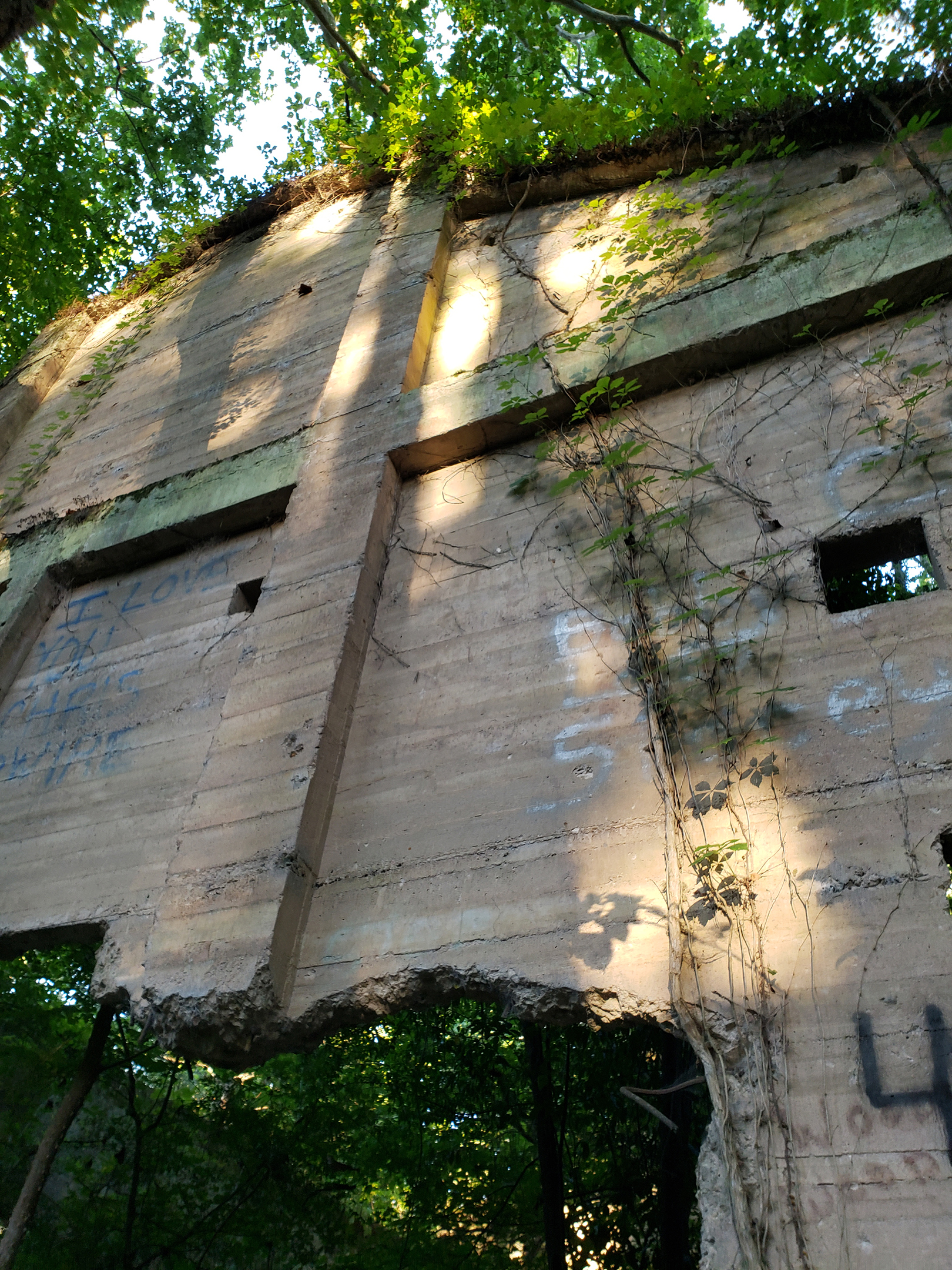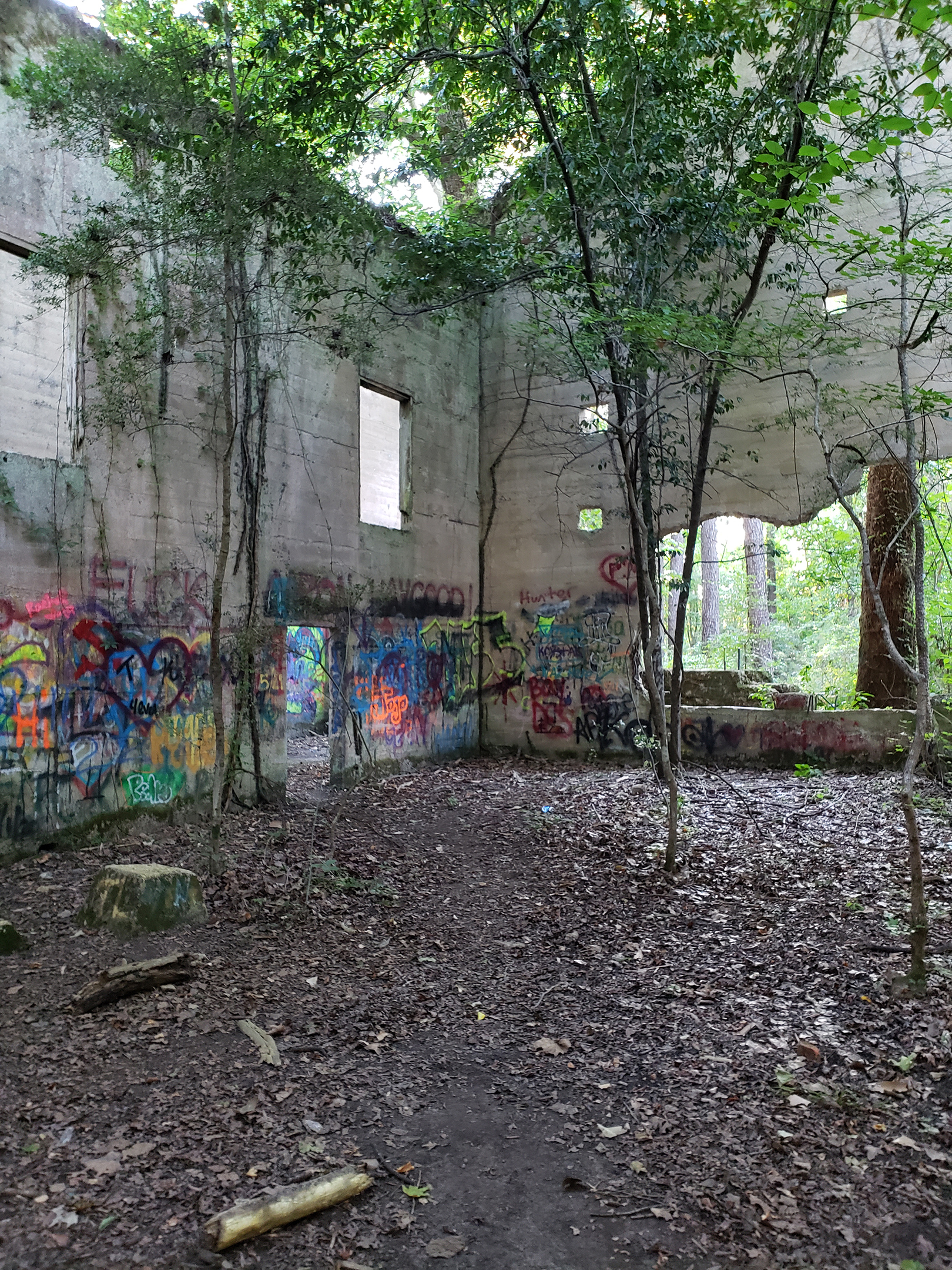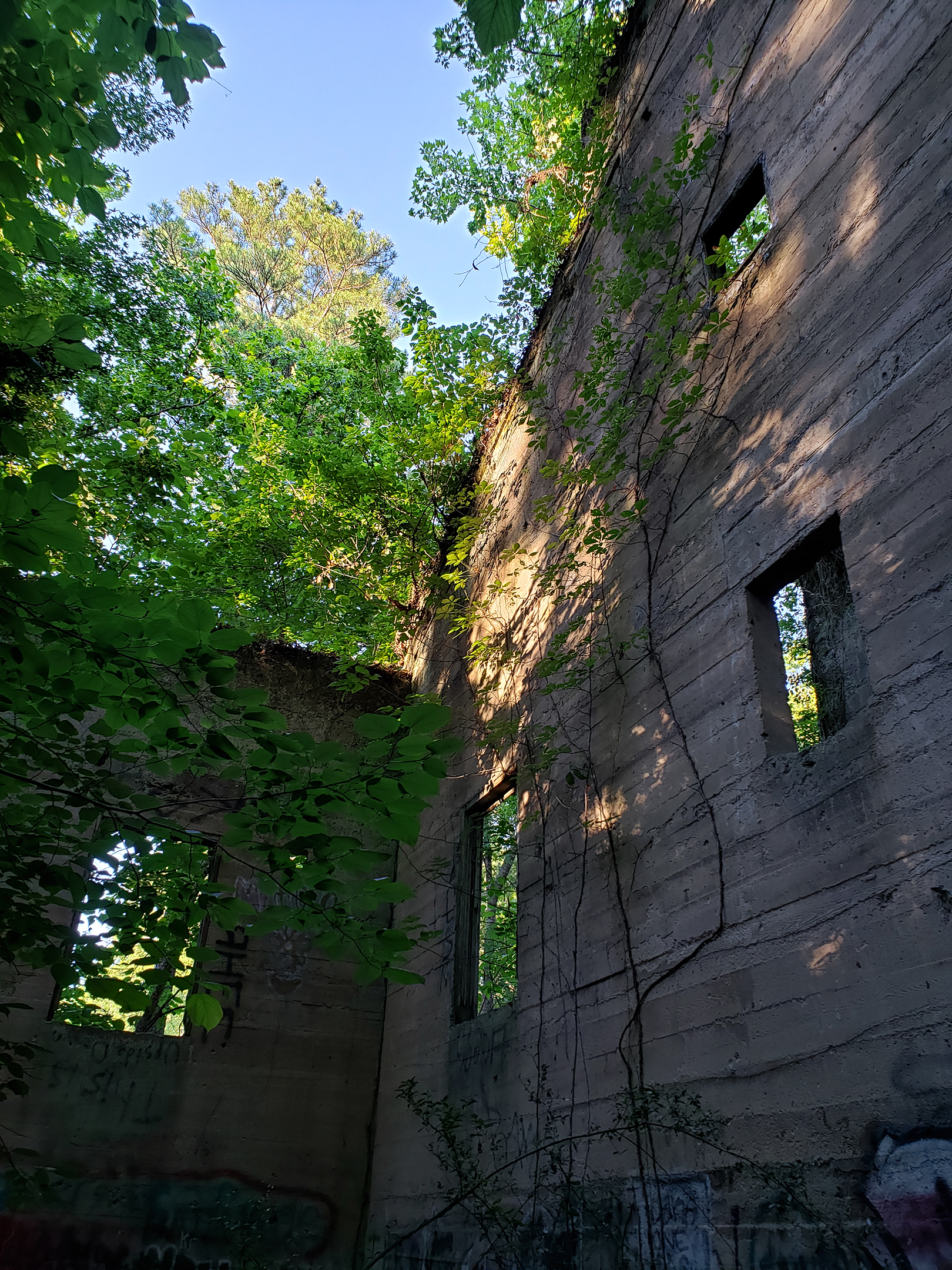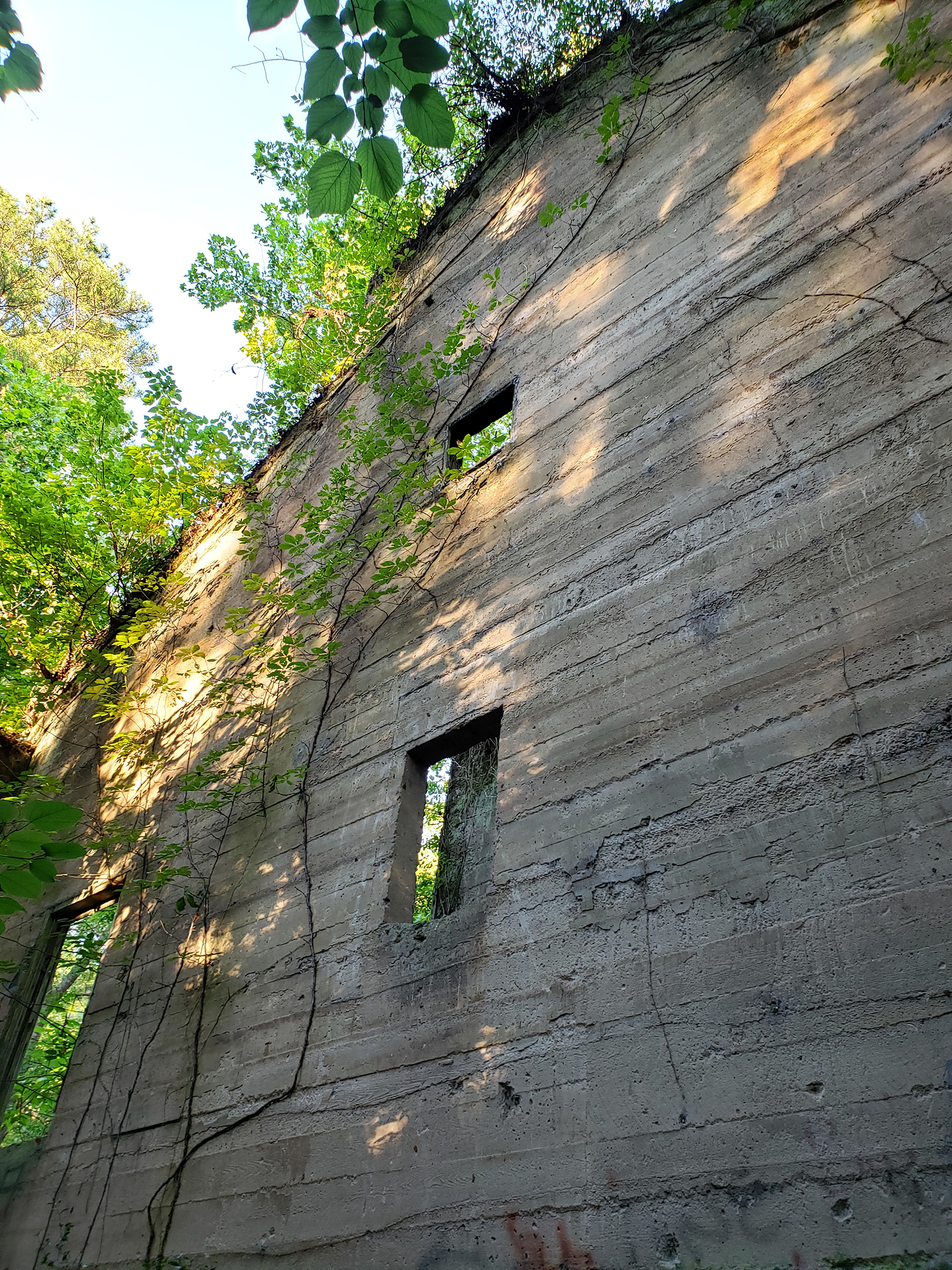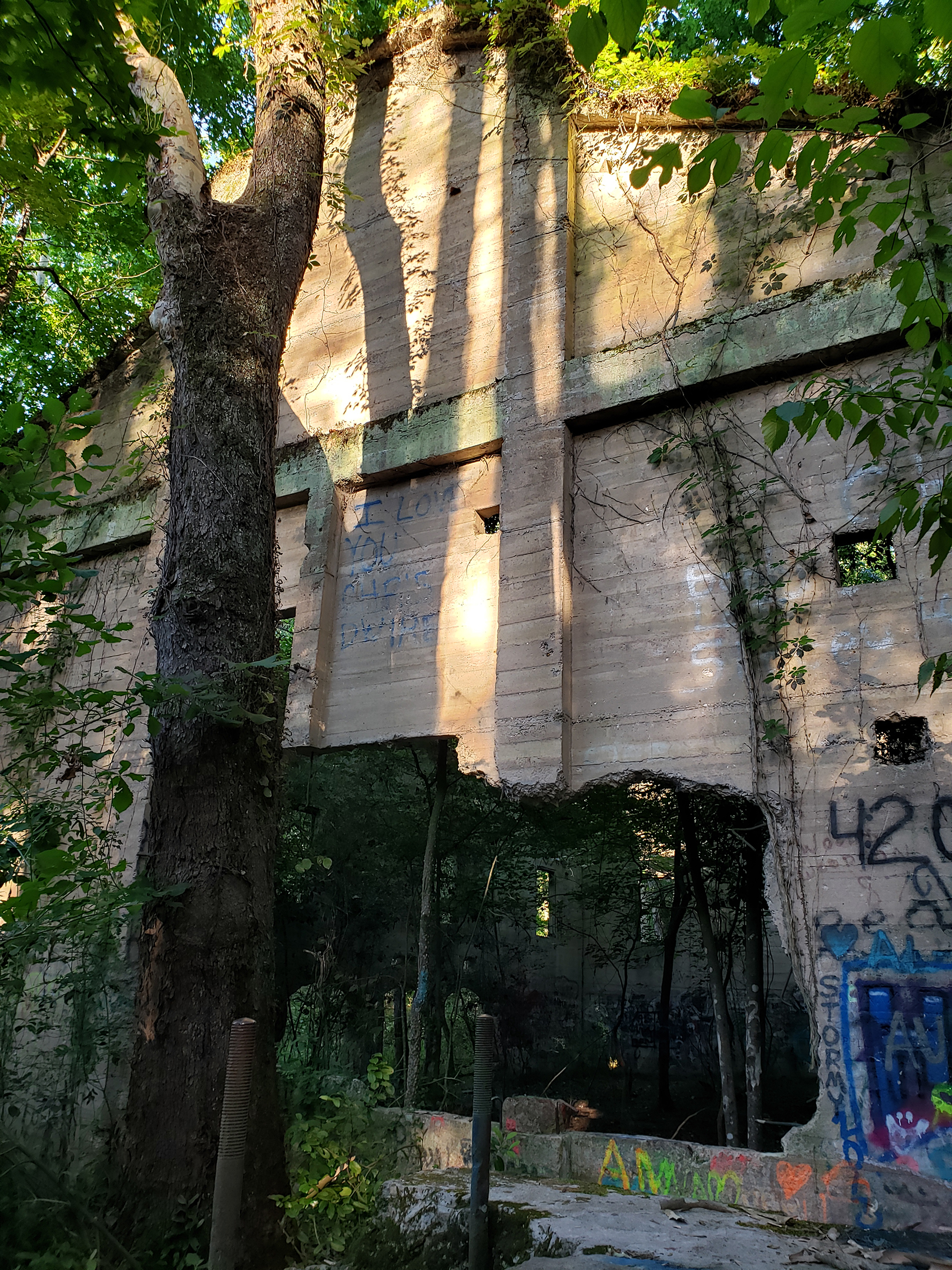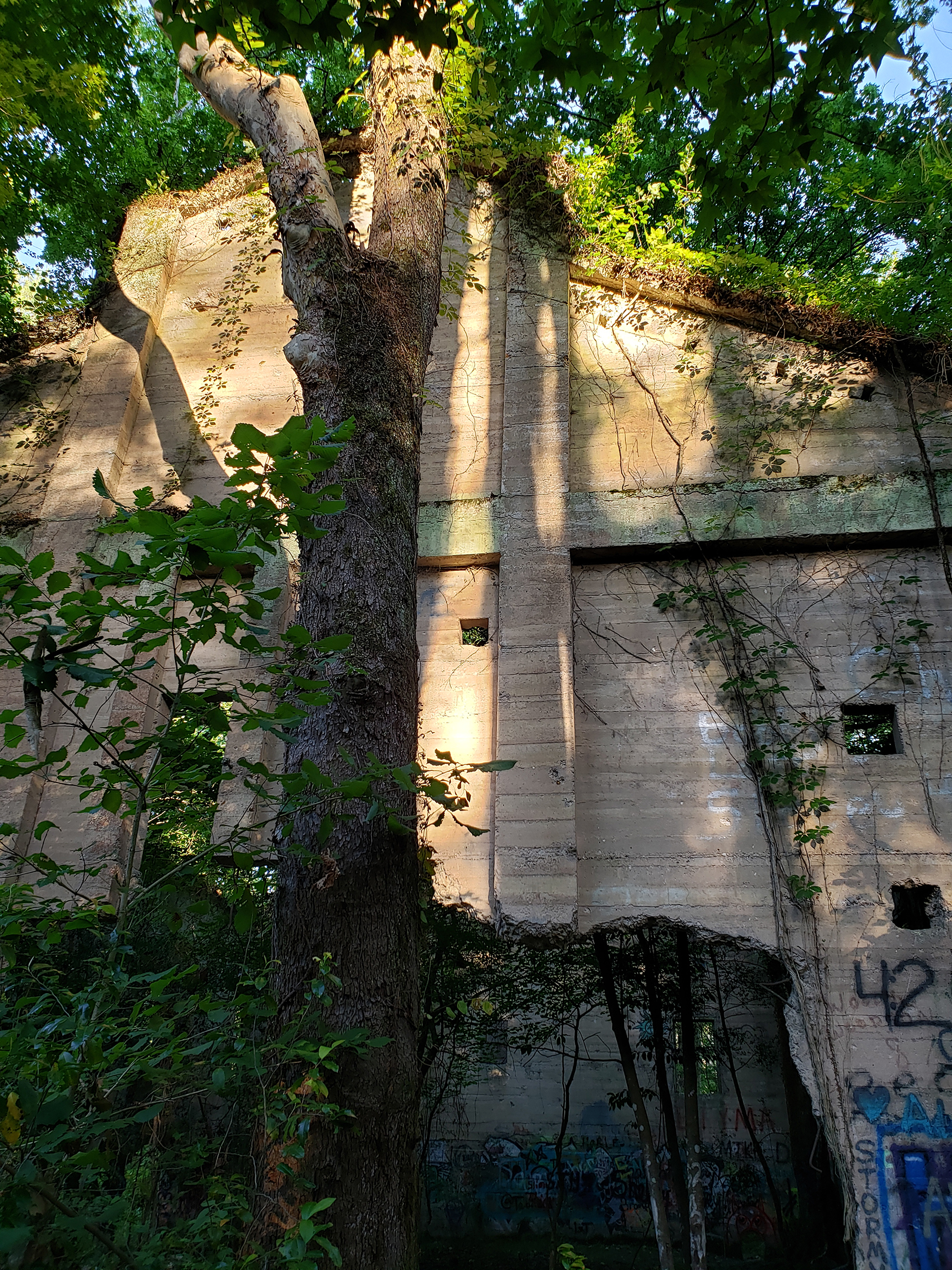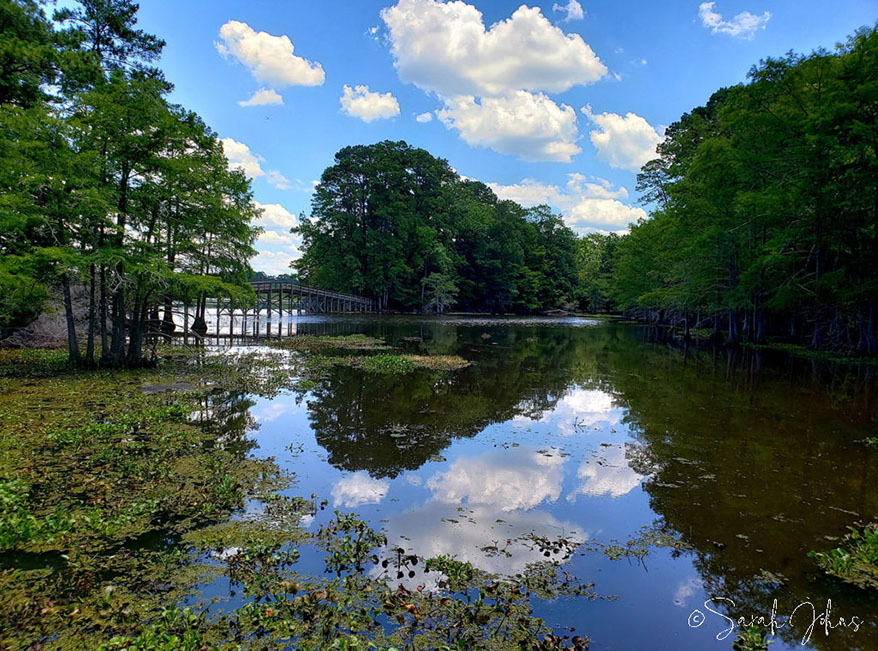
The Aldridge Sawmill Historic Site
Hidden and tucked away in the Angelina National Forest north of Jasper, Texas lies what remains of the Aldridge Sawmill, known today as the Aldridge Sawmill Historic Site. The Aldridge Mill and Township have remained abandoned for decades, but the concrete structures still stand over one hundred years later.
A 110-year-old ghost town hidden deep in the Angelina National Forest.
During the process of organizing our East Texas trip, I stumbled upon details about the Aldridge Sawmill. I was completely unaware of its existence, but every piece of information and every image I came across captivated me. There was something irresistible about this ghost town I just had to see. I could not resist exploring the ruins. I wanted to investigate and stroll through those collapsed structures that had endured for years. The site beckoned me, and I was so eager to explore the area and see it in person, so when we headed to the Pineywoods of Deep East Texas, it was on the top of my list. The experience is something I will never forget. I recommend you try it, too.



HISTORY

Hal Aldridge constructed the mill in 1905, and after the construction, a small community grew from the site also known as Aldridge. By 1911, there were seventy-six buildings at Aldridge, including houses, a warehouse, hotel, company store, and company offices. At its peak, it employed five hundred workers and churned out 125,000 board feet of lumber a day. The Aldridge Sawmill in East Texas was one of the biggest producers of lumber during the “Bonanza Era” in Texas lumbering.
It was the largest mill operation in East Texas and one of the largest lumber producers in the state of Texas. By 1913, the population swelled and 1000-1500 people lived in the two hundred company houses in the quiet, artfully arranged community of Aldridge. The majority of the men received payment in company scrip, in the form of tokens that could be used at the company store to buy groceries and other items for the home. The site featured employee housing, a commissary, a 20-room hotel for travelers, a post office, a blacksmith shop, a train depot, two schools, and various shops and saloons.

Unfortunately, success and prosperity at Aldridge did not last. On October 22, 1914, an arsonist struck the mill, marking the second fire for the Aldridge Mill. Three years prior, the first fire on August 25, 1911, burned the mill to the ground. After fire destroyed the Aldridge Sawmill in 1911, concrete buildings were constructed to house the new equipment. The ruins of these buildings still remain at the Aldridge site. Twice hit by misfortune, Hal Aldridge elected to quit the lumber business and move to EI Paso, leaving his operation in care of company Vice President F. W. Aldridge (assumed to be Hal Aldridge’s brother.) Fortunately, someone discovered the October 22 fire after it started, and it caused minimal damage. However, business at the mill began trending downward, likely from depleting the pine forest in the area. And in 1919, yet another fire delivered the final death blow to the Aldridge, and the town was abandoned by 1920.

Today the town is gone, but over one hundred years later the shells of four concrete mill buildings, numerous foundations, the millpond, and portions of the old railroad tram remain. Nature is taking over the site, reclaiming the ruins and transforming it into a secret of the forest. The remains include four massive concrete structures that held the boiler room, engine room, fuel room, and the drying kiln. The sawmill pond used to be nearby. There is no sign of the residential structures, the schools, churches, commissary, or the hotel. When the mill closed down, they sold and removed the houses as salvage. Only second-growth timber now stands where a community once thrived.
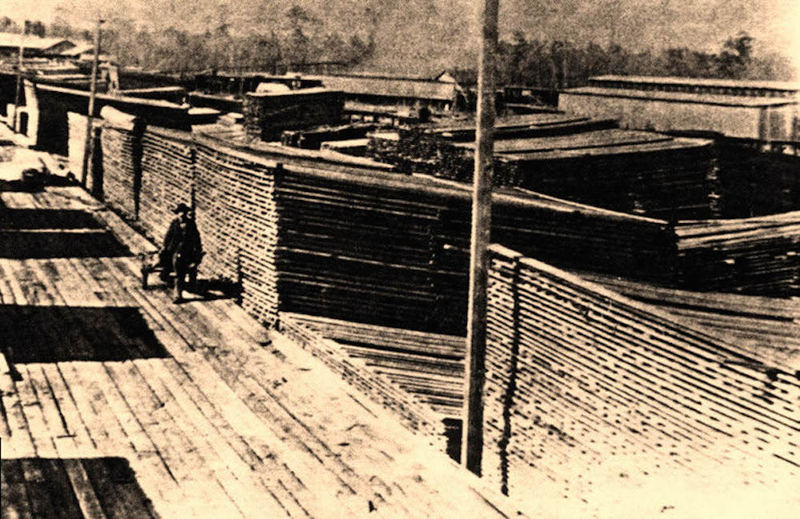
Recollections from Former Residents
Recollections of Mittie Mae Blake Dykes, age: 102 1/2
Mittie was born in 1894, in Angelina County, Texas. She had five brothers and sisters, most of whom died early on of pneumonia. She recalled Aldridge had “nice houses and a nice big school,” with many children going to it. Everyone around worked in the mill, whites and blacks together. “There was a big kitchen at Aldridge where you could buy dinner” (the noon meal). They also had a doctor’s office, drug store, barber shop, and a kitchen — “a big, long house with big, long tables and benches on each side.” The main cook was a man, and about ten women worked with him there from daylight until dark. According to Mittie, she didn’t ask to work in the kitchen; they “just came and got her.” Someone had told them she could cook.
Mittie’s husband Jess was a carpenter who worked outside the mill. He made furniture and also worked at the blacksmith’s shop. Jess played the fiddle for the dances at Aldridge and other places, and Mittie liked to dance. They were married in May 1918. Jess died in 1940 at age 50, from pneumonia.
— Interview by Faye Green, October 16, 1996.
.
Recollections of R.Z. Hinson, age 79
R.Z. was born in 1917 in Aldridge Sawmill Town. He recalls that he and his family lived in a frame board and batten house with four rooms, a wood heater, and a front porch. The houses were fairly close together, and there was a well between every second house and the next. They had “colored” quarters and white quarters. For Fourth of July at Aldridge, they would spend the week before fishing in the river and kept the fish alive in a box in the water. Then they would have a big fish fry behind grandpa’s house on the river. His grandpa once caught a 49-pound catfish with clabber milk for bait, tied up in a rag in a net.
— Interview by Fay Green, May 22, 1997.

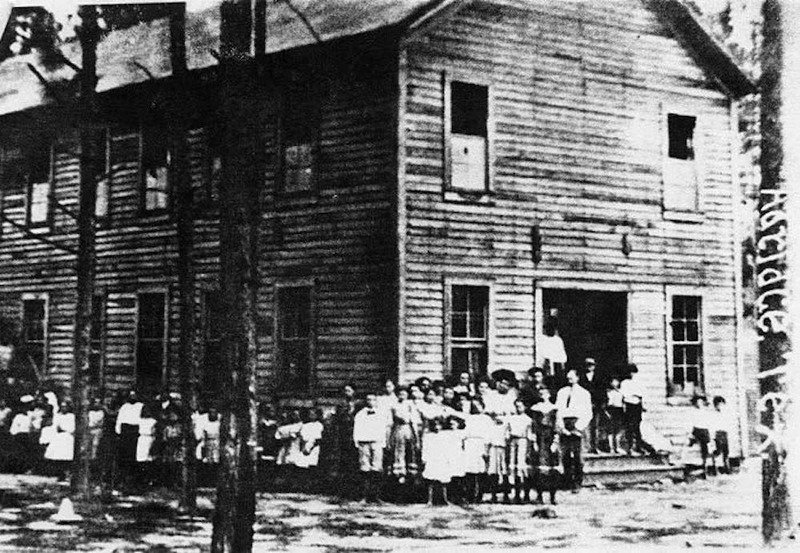
EXPLORING
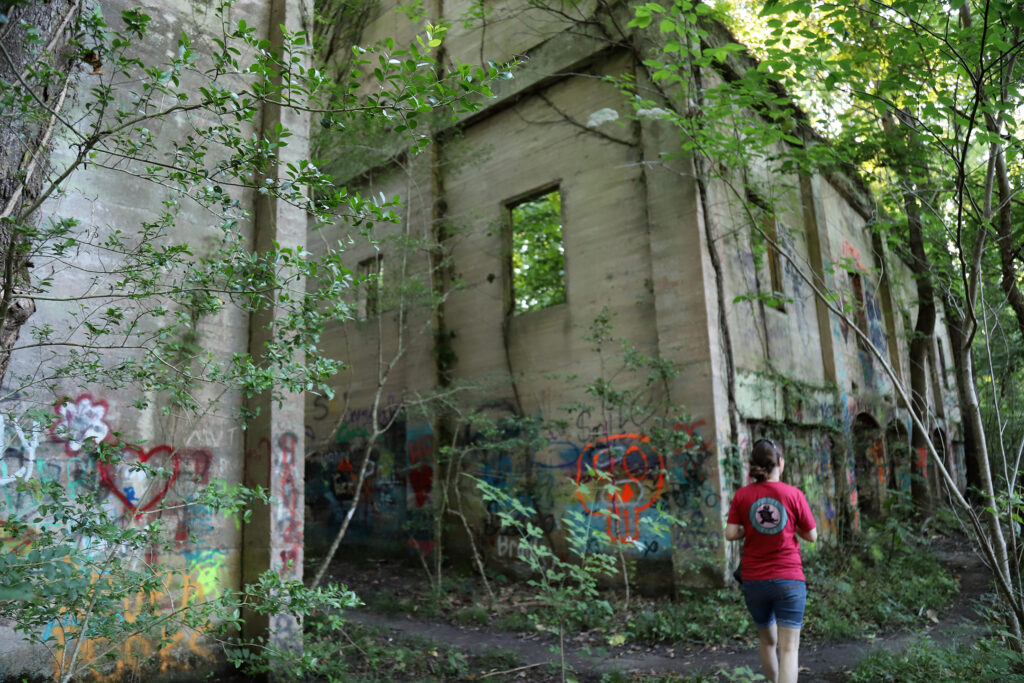
One of the few sites of its type with significant structural remains, the Aldridge Sawmill has been listed on the National Register of Historic Places.
As you step through the forest, the abandoned buildings plagued by graffiti stand before you as a lost relic. The sight of it all struck me, but there was a sense of eeriness that spun around me as I stood in the middle of that old forgotten mill. I stood amongst the trees and the silence, absorbing my surroundings. There was so much silence. Incredible silence. There was no one there but us and not even the birds sang to one another that day, nor did any breeze whisper through the towering branches. The forest blanketed me with complete, utter silence, and that utter silence washed a sense of peace over me. A peace I had not felt in months. There is much to be said about standing in the silence amongst the trees, surrounded by those lost relics from the past. I paused before I took another step and continued to soak in my surroundings. The silence danced around me, and I stood in awe. The towering forest engulfed me, and I marveled at the lives that had once inhabited the mill’s abandoned shells.
I tried to envision the town at its peak and bring it back to life, bustling with people with a loud working sawmill, houses, schools and store, and everything else you would find in a town, but I found it difficult to envision such a lively community in the silent, dark forest that had overtaken everything. So many lives had inhabited and perished there, but all that remained were the ghosts of the past and the crumbling buildings.
I stepped forward and lost myself in the maze of foundations and abandoned, crumbling buildings, searching for secrets from the past. As the afternoon slipped away, we wandered through the historic grounds filled with history and lost ourselves in the remnants of the Aldridge Sawmill. After we explored and visited the pond, we headed back to the truck. All the way back I wondered what other secrets of Aldridge the forest held.
FINAL THOUGHTS
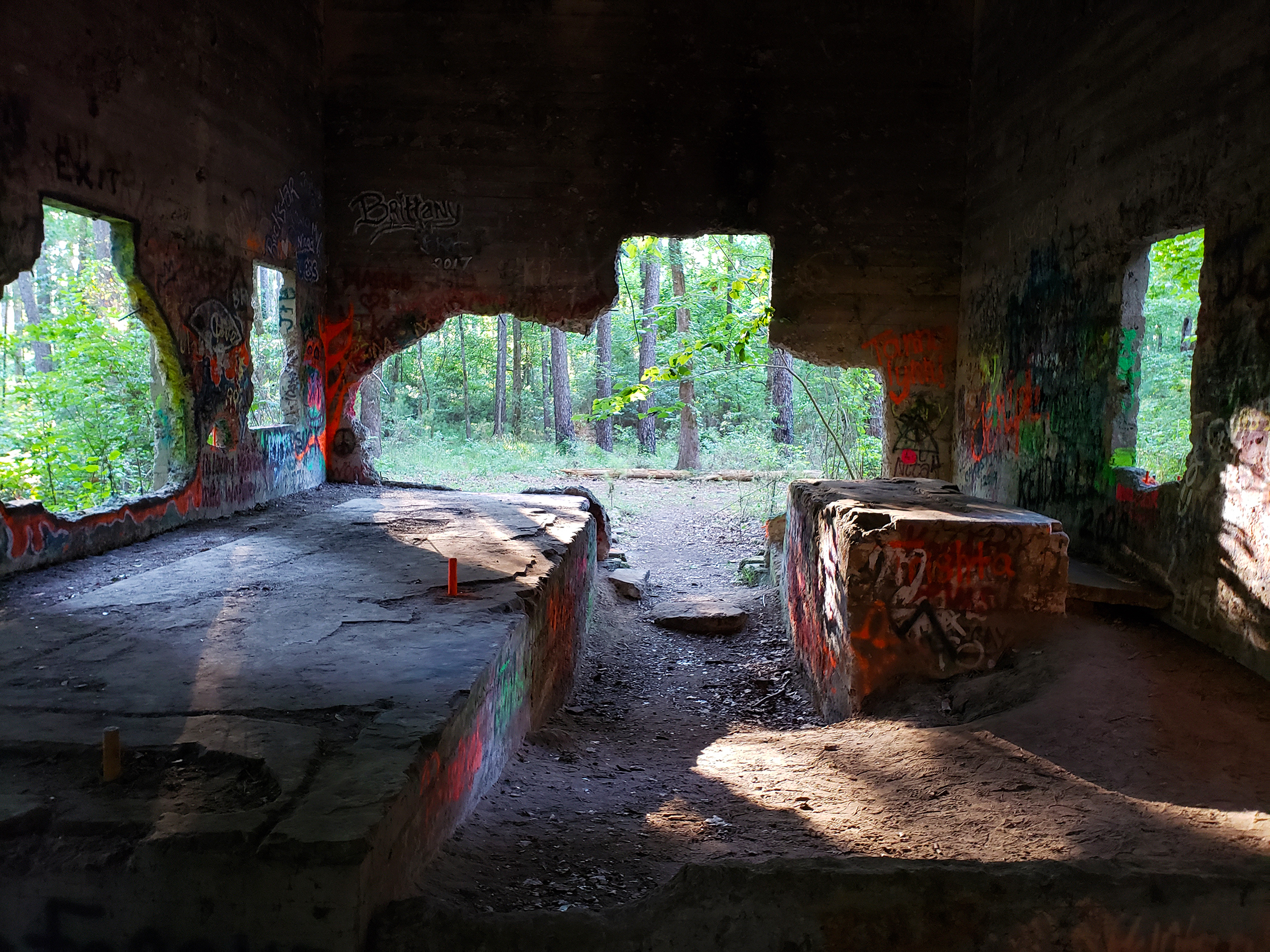
Located deep in the forest, the Aldridge Sawmill Historic Site is one you don’t want to miss. Full of history with endless places to explore, it is an experience you will never forget. The Aldridge Sawmill Historic Site offers an incredible experience. As you pass through the maze of foundations and the crumbling buildings with their concrete walls overgrown, crumbling, and splotched with graffiti, this historic site sends you back to a lost time. While the town itself is gone, the abandoned shells of the four concrete mill buildings, various concrete foundations, the millpond, and portions of the old railroad tram remain. Trust me, don’t miss this one!
PLEASE NOTE:
- The forest authorities have posted forest wide regulations at the Aldridge trailhead.
- The Aldridge site, a recorded historic property, falls under the protection of CFR 261.9 of the Code of Federal Regulations, which prohibits digging, collecting artifacts, using a metal detector, or damaging or defacing the site. Violators will face prosecution.
- Hikers are allowed, but riding off-road vehicles or horses in the Aldridge area is prohibited due to archeological concerns.
- Remember, LEAVE NO TRACE: Today, the site continues to be threatened by vandals and treasure seekers. Vandals have painted graffiti on many of the walls at the Aldridge site, a highly destructive activity that Forest Service staff hope to discourage with greater education efforts.
For More Information:
Angelina National Forest
111 Walnut Ridge Road
Zavalla, TX 75980
(936) 897-1068
(8 a.m.- 4:30 p.m. M-F)
Directions

Two ways exist to access the site:
- From Zavalla, turn left (east) on Highway 63 and follow 10.5 miles to Boykin Springs Road; turn right (south) for 1.5 miles to fork; bear left onto dirt road and follow three miles to Aldridge. Follow until you reach a gated trail with an Aldridge Sawmill sign. A small area is available for parking on the shoulder, and the sawmill is a short walk (less than one hundred yards) down this trail. A high-clearance vehicle may be necessary for this route in inclement weather.
- You can also access it via a 2.5-mile hiking trail beginning at Boykin Springs Recreation Area.
Travel and Wander.



